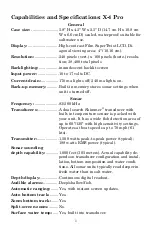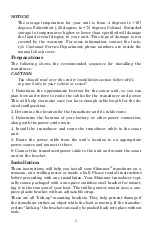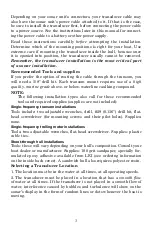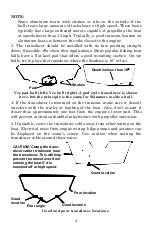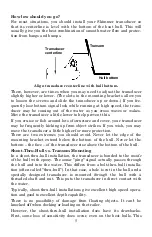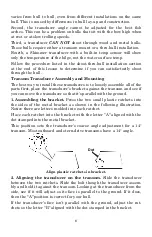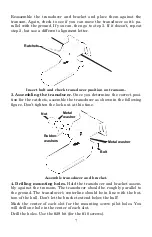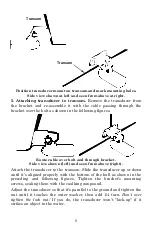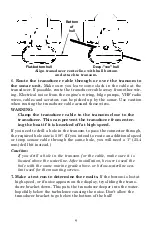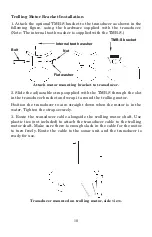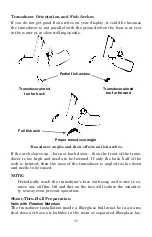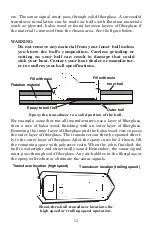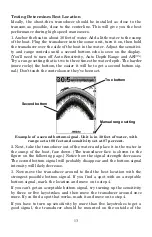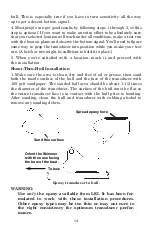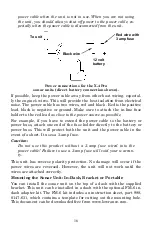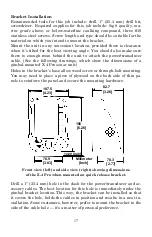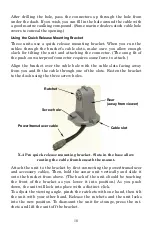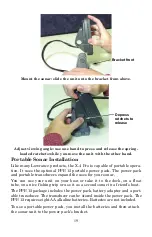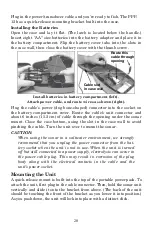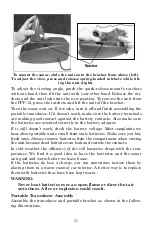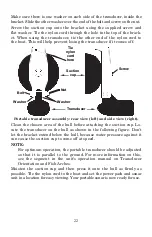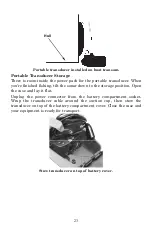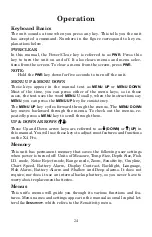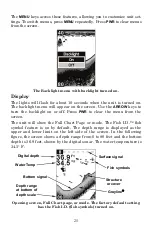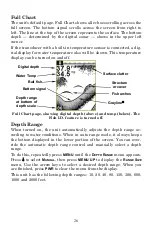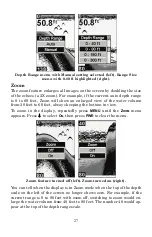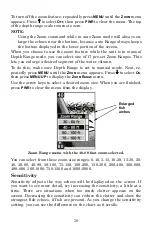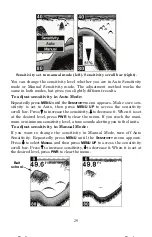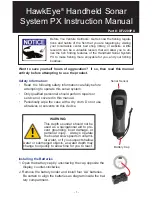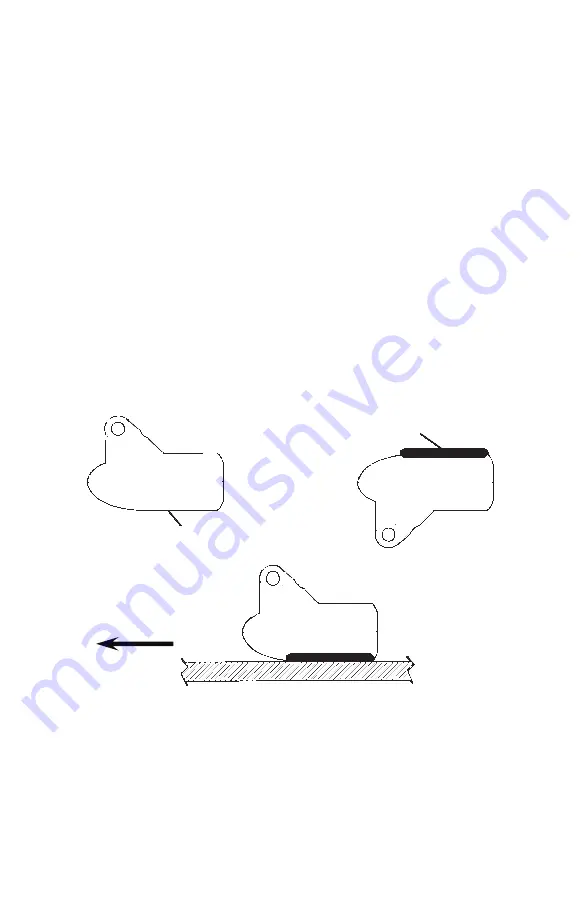
14
hull. This is especially true if you have to turn sensitivity all the way
up to get a decent bottom signal.
4. Most people can get good results by following steps 1 through 3, so this
step is
optional
. If you want to make an extra effort to be absolutely sure
that your selected location will work under all conditions, make a test run
with the boat on plane and observe the bottom signal. You'll need to figure
some way to prop the transducer into position while you make your test
run. (A brick or two might be sufficient to hold it in place.)
5. When you're satisfied with a location, mark it and proceed with
the installation.
Shoot-Thru-Hull Installation
1. Make sure the area is clean, dry and free of oil or grease, then sand
both the inside surface of the hull and the face of the transducer with
100 grit sandpaper. The sanded hull area should be about 1-1/2 times
the diameter of the transducer. The surface of the hull must be flat so
the entire transducer face is in contact with the hull prior to bonding.
After sanding, clean the hull and transducer with rubbing alcohol to
remove any sanding debris.
Epoxy transducer to hull.
WARNING:
Use
only
the epoxy available from LEI. It has been for-
mulated to work with these installation procedures.
Other epoxy types may be too thin or may not cure to
the right consistency for optimum transducer perfor-
mance.
Spread epoxy here
Sand this surface
Orient the Skimmer
with the nose facing
the bow of the boat.
To bow


